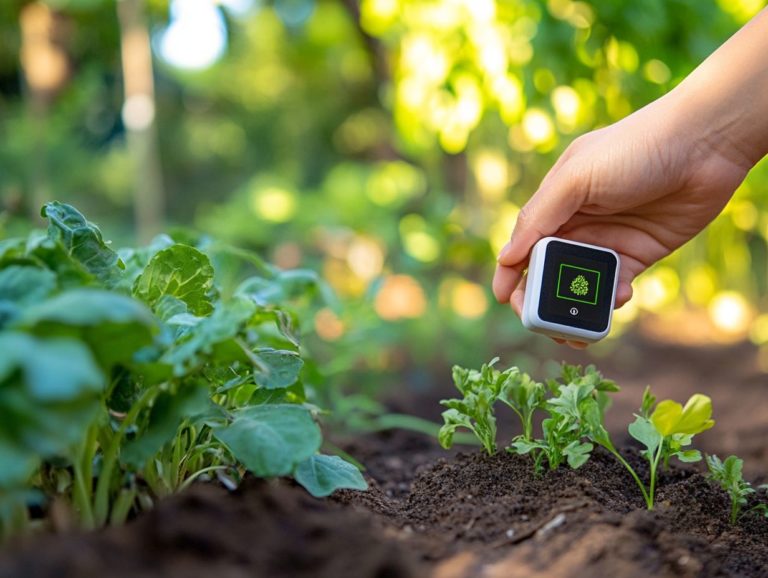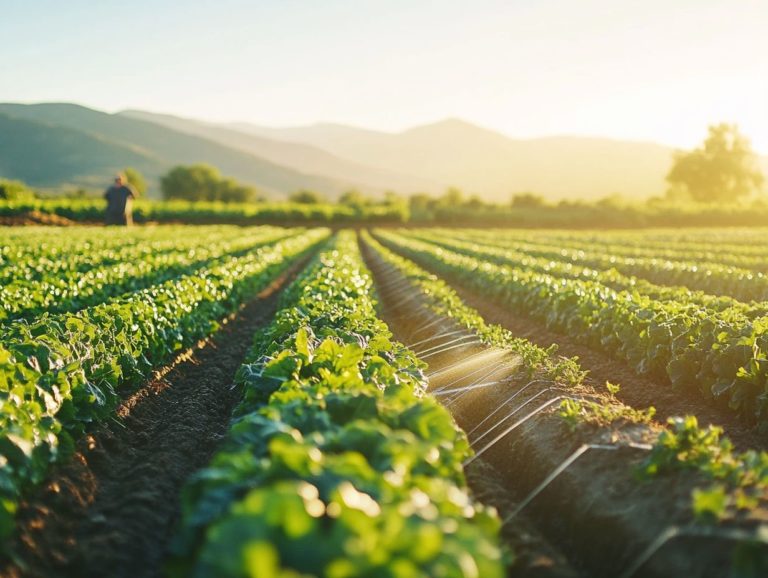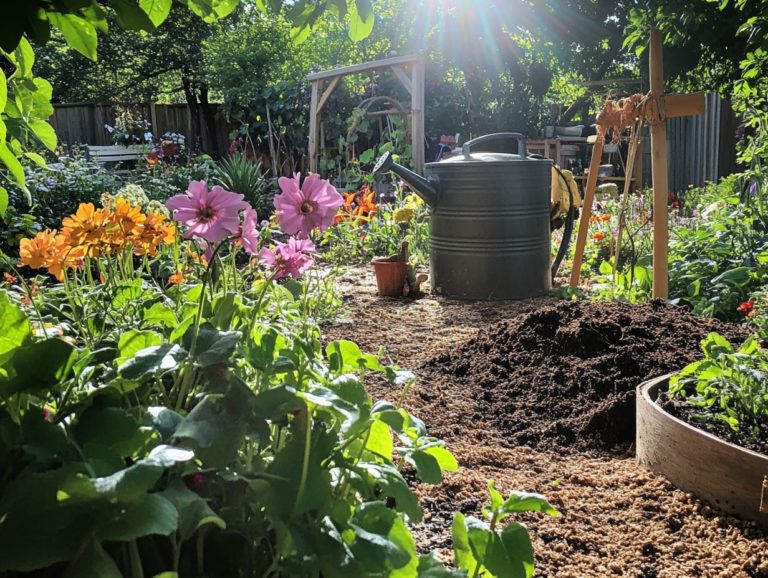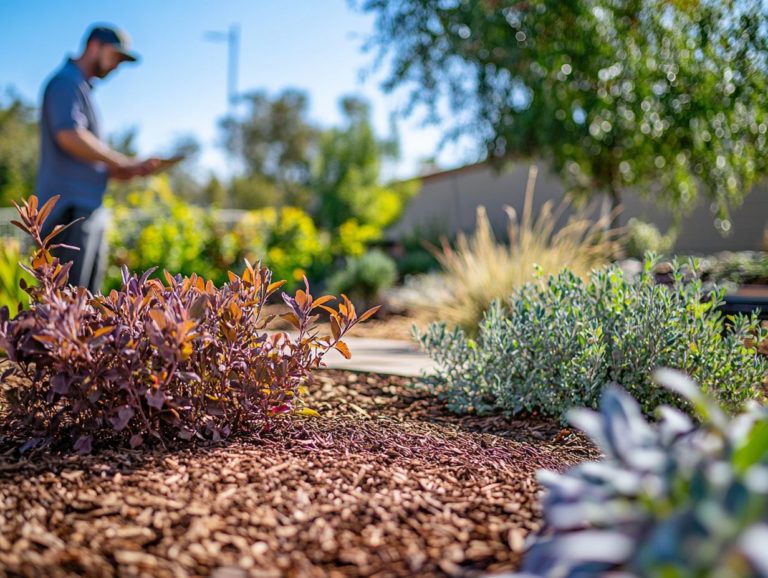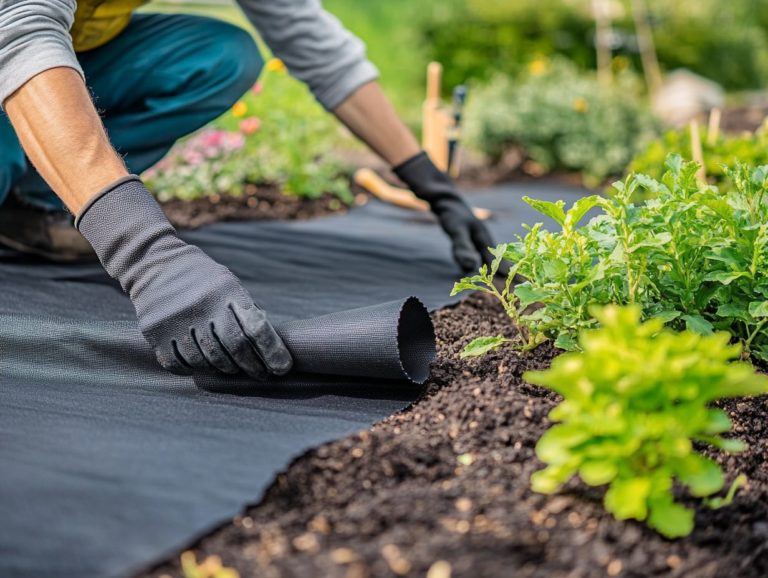Best Companion Plants for Drought Areas
In today s challenging climate, gardening in drought-prone areas demands a strategic approach to ensure your plants not only survive but truly thrive.
Companion planting emerges as a sustainable solution, pairing plants that enhance each other s growth while conserving those precious water resources.
This exploration of companion planting essentials will illuminate its myriad benefits in drought conditions.
From native species that flourish in arid environments to plants adept at retaining soil moisture and attracting beneficial insects, you ll learn how to cultivate a resilient garden that stands the test of climate challenges.
If you re eager to maximize your garden s potential while minimizing water use, continue reading to discover the best companion plants for your drought-affected landscape.
Contents
- Key Takeaways:
- 1. Understanding Companion Planting
- 2. Benefits of Companion Planting in Drought Areas
- 3. Native Plants for Drought Areas
- 4. Drought-Tolerant Plants That Thrive Together
- 5. Plants That Help Retain Moisture in the Soil
- 6. Plants That Attract Beneficial Insects
- 7. Plants That Provide Shade for Each Other
- 8. Plants That Help Control Weeds
- 9. Plants That Improve Soil Quality and Growing Conditions
- 10. Plants That Help with Pollination
- 11. Companion Plants for Vegetables in Drought Areas
- 12. Companion Plants for Fruits in Drought Areas
- 13. Companion Plants for Herbs in Drought Areas
- 14. Companion Plants for Flowers in Drought Areas
- 15. Tips for Successful Companion Planting in Drought Areas
- Frequently Asked Questions
- What are the best companion plants for drought areas?
- Why are these plants considered good companions for drought areas?
- Do these plants have any other benefits?
- Can I mix these plants with other types of plants in my garden?
- Are there any specific planting considerations for these companion plants?
- Do these plants require any special care?
Key Takeaways:
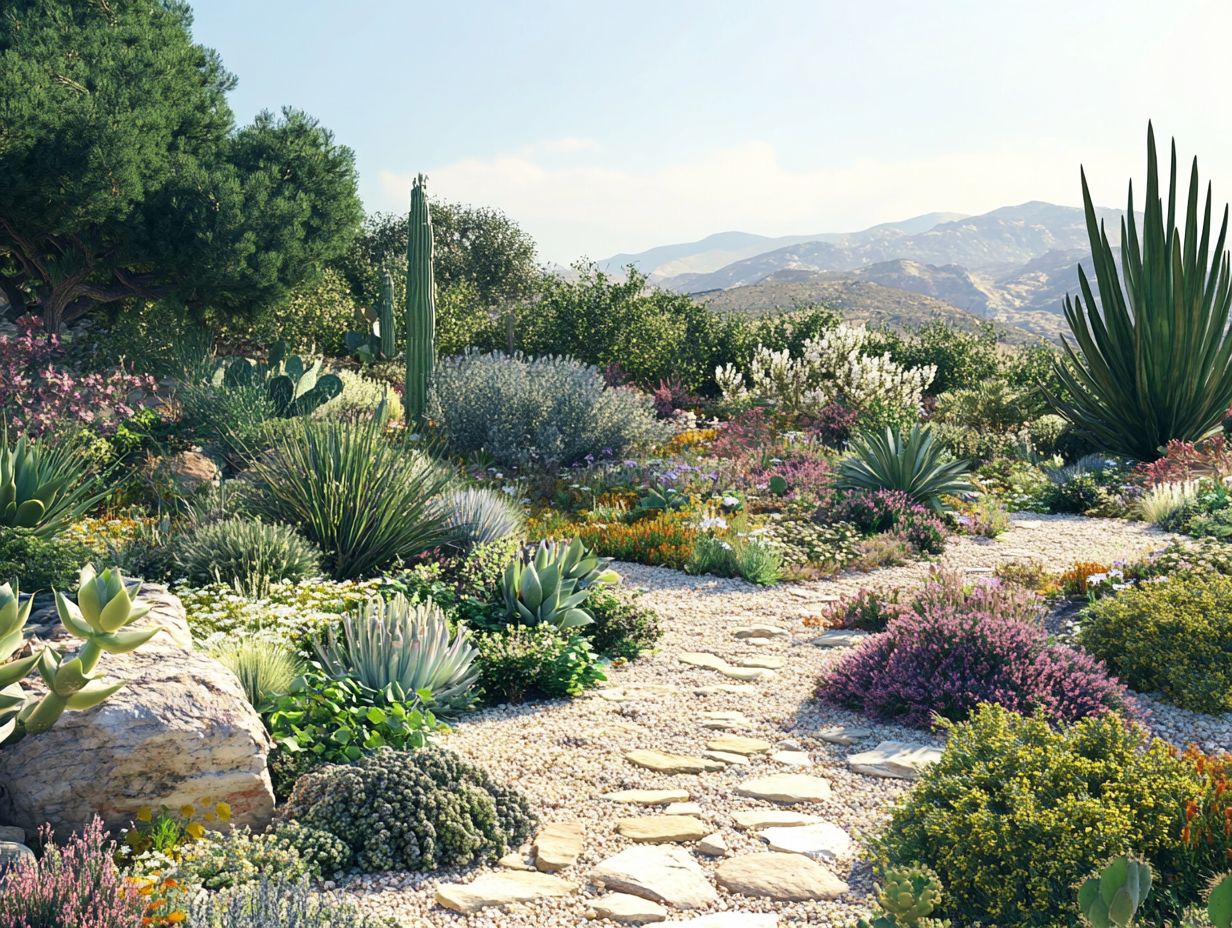
- Choose native plants for drought areas to ensure they are well-adapted and can thrive in these conditions.
- Companion planting in drought areas can provide multiple benefits such as retaining moisture, controlling weeds, and attracting beneficial insects.
- When selecting companion plants, consider their compatibility, ability to attract pollinators, and provide shade and soil improvement.
1. Understanding Companion Planting
Companion planting is a gardening technique that allows you to strategically place plants together to unlock a world of benefits. These include boosting growth, repelling pesky pests, and enhancing the visual allure of your garden beds.
This age-old practice has made a comeback in modern gardening, especially with sun-loving plants like lavender that thrive in well-draining soil, hailing from the sun-kissed Mediterranean.
Throughout history, various cultures have harnessed this method to create flourishing gardens, highlighting the vital role of plant partnerships in agriculture.
For example, when you pair tall sunflowers with climbing beans, you re not just providing structural support; you re also optimizing sunlight exposure for both plants.
Some herbs, like basil, have a reputation for fending off pests that threaten neighboring vegetables, effectively setting up a natural pest management system.
The interplay of colors and textures from different companion plants elevates your garden s visual appeal. It transforms it into not just a source of food but a feast for the eyes.
2. Benefits of Companion Planting in Drought Areas
Companion planting in drought-prone areas presents a wealth of benefits. These include improved moisture retention, enhanced soil quality, and the attraction of beneficial pollinators. To learn more about this technique, check out what companion planting is for drought-resistant gardening.
This approach is crucial for sustainable gardening in tough climates! By thoughtfully selecting plants that work well together, you can cultivate a thriving ecosystem that conserves water and reduces the need for frequent irrigation.
For example, pairing drought-tolerant varieties like lavender and sage can significantly improve soil moisture retention. Their deep root systems prevent erosion and maximize water absorption.
Incorporating heat-resistant flowers alongside your vegetable crops provides much-needed shade and helps reduce evaporation. Understanding the specific growing conditions for these plant pairings ensures they thrive, ultimately fostering a resilient garden even in the harshest environments.
3. Native Plants for Drought Areas
Using native plants in drought-prone areas is a smart gardening choice. It s a strategic move tailored to local growing conditions.
These plants offer numerous benefits such as drought tolerance, culinary uses, and medicinal properties. They also support local pollinators.
Not only do these resilient plants flourish in arid environments, but they also play a pivotal role in enhancing biodiversity and ecosystem resilience.
Take lavender and sage, for example. They re not just drought-resistant; they also elevate your culinary creations, bringing a burst of flavor to your dishes.
Plus, they attract beneficial insects like bees and butterflies, which are essential for pollination.
Consider herbs like echinacea, known for their immune-boosting properties. By incorporating such native varieties into your garden, you can cultivate a sustainable landscape that maintains ecological balance while delivering practical benefits.
4. Drought-Tolerant Plants That Thrive Together
Consider incorporating certain drought-tolerant plants, like lavender, yarrow, and coneflower, into your garden beds. Not only do these plants survive, but they also thrive, creating a lively display of summer colors while keeping water usage to a minimum.
These plants also offer a delightful mix of textures and colors. Picture the soft, fragrant blooms of lavender paired with the bold, daisy-like faces of coneflowers.
Yarrow, with its feathery foliage and clusters of tiny flowers, adds depth and visual interest to the arrangement.
When you position these species wisely, they can enhance each other’s growth by providing shade, attracting beneficial insects, and reducing soil moisture evaporation. Together, they create an inviting habitat for pollinators while maintaining a breathtaking aesthetic that can brighten any landscape.
Their adaptability to various soil types only adds to their appeal, making them an excellent choice for sustainable gardening solutions.
5. Plants That Help Retain Moisture in the Soil
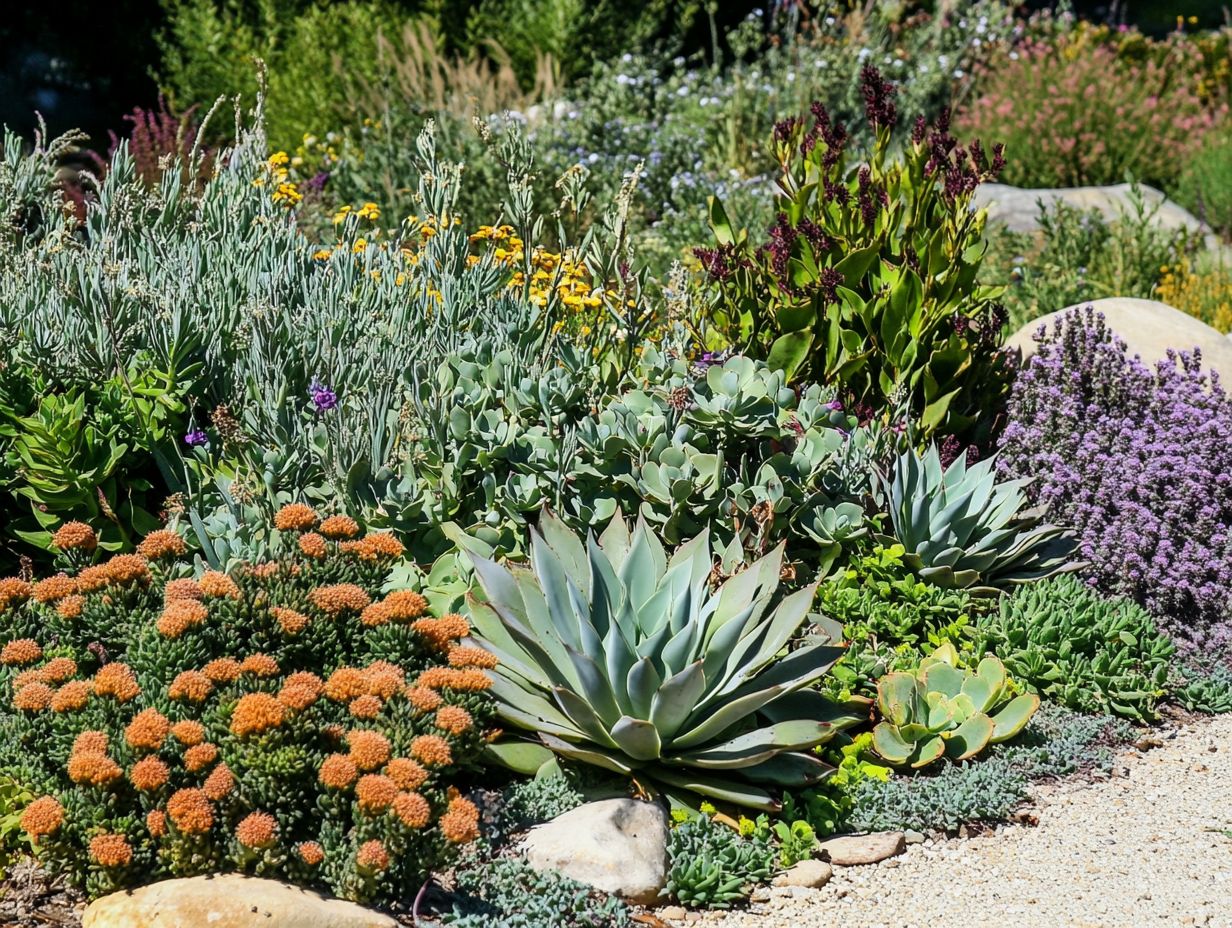
Certain plants are particularly effective at retaining moisture in the soil, making them invaluable for gardeners in drought-prone areas. This includes both native plants and ornamental varieties that thrive in well-draining soil.
These moisture-retaining plants thrive. They develop extensive root systems that reach deep into the ground, allowing for superior water absorption. Their unique foliage plays a vital role as well; many plants have adapted to minimize water loss through the process of losing water known as transpiration.
In xeriscaped gardens, these plants create a robust ecosystem that supports soil health and enhances its ability to retain moisture for longer periods.
By combining a diverse array of plant types, you can harness the varying strategies of these species to cultivate a healthier landscape, even under challenging conditions in arid environments.
6. Plants That Attract Beneficial Insects
Plants like lavender, rosemary, and marigold don t just look good; they play a vital role in attracting beneficial insects and pollinators, contributing to a thriving ecosystem right in your garden.
These remarkable plants create a sanctuary for bees, butterflies, and ladybugs key players in pollination and natural pest control. By incorporating them thoughtfully into your garden layout, you can boost the growth of nearby crops and flowers while minimizing the need for chemical solutions.
For example, pairing marigolds with tomatoes allows the vibrant blooms to fend off harmful nematodes, helping your tomatoes flourish. Likewise, planting lavender near your fruit trees invites pollinators, significantly enhancing your fruit yield while adding a delightful aroma to your space.
By integrating these plants into your companion planting strategies, including salvia and zinnia, you promote biodiversity and nurture a thriving environment for both plants and wildlife.
7. Plants That Provide Shade for Each Other
Certain plants, when strategically positioned, can offer vital shade to one another, such as oleander and elderberries. This creates a microclimate that significantly enhances growth in drought-prone gardens, particularly in areas where sunlight can be relentless.
Incorporating trees like oaks or maples, or even sizable shrubs such as hydrangeas and elderberries, allows you to significantly reduce direct sunlight exposure. These shade providers create refreshing cool spots and help retain moisture by slowing evaporation from the soil.
To design a garden layout that maximizes these advantages, group sun-sensitive plants beneath taller varieties. This way, they receive ample indirect light while being shielded from harsh elements. Establishing such thoughtful relationships cultivates a thriving ecosystem, where plants support one another in resilience and beauty.
8. Plants That Help Control Weeds
Companion planting can be an incredibly effective strategy for controlling weeds in your garden. By selecting certain drought-tolerant plants, you can create a lush, dense foliage cover that not only suppresses unwanted weeds but also enhances the overall health of your garden.
These plants are characterized by robust root systems and rapid growth rates. This allows them to outcompete weeds for light, water, and nutrients. They limit the space and resources available for invasive species.
During dry spells, these resilient plants soak up moisture and provide shade, deterring weeds while improving soil structure and promoting biodiversity. By integrating such species into your garden, you cultivate a balanced ecosystem where beneficial insects thrive, keeping pest populations in check.
Utilizing these carefully selected plants can truly make a difference, especially in arid regions where traditional weed management methods often fall short, particularly when considering drought-tolerant varieties.
9. Plants That Improve Soil Quality and Growing Conditions
Integrating specific plants into your companion planting plan can significantly enhance soil quality, promoting healthier root systems and ensuring your garden thrives even in drought conditions while providing ideal growing conditions.
Plants like legumes (plants that improve soil nitrogen), deep-rooted perennials, and certain cover crops amplify soil fertility and contribute organic matter as they decay, enhancing both structure and texture.
Legumes, in particular, are a game-changer with their ability to add nitrogen to the soil, enriching it and providing vital support to neighboring crops. Deep-rooted perennials, such as chicory and dandelion, reach down into lower soil layers to draw up nutrients while breaking up compacted soil and enhancing aeration.
If you re managing a dry environment, consider incorporating drought-resistant varieties like native grasses, ornamental plants, or succulents. These amazing plants hold onto moisture like champions and minimize erosion. By thoughtfully selecting and layering these plants, you can cultivate a thriving garden ecosystem that boosts both soil health and plant resilience.
10. Plants That Help with Pollination
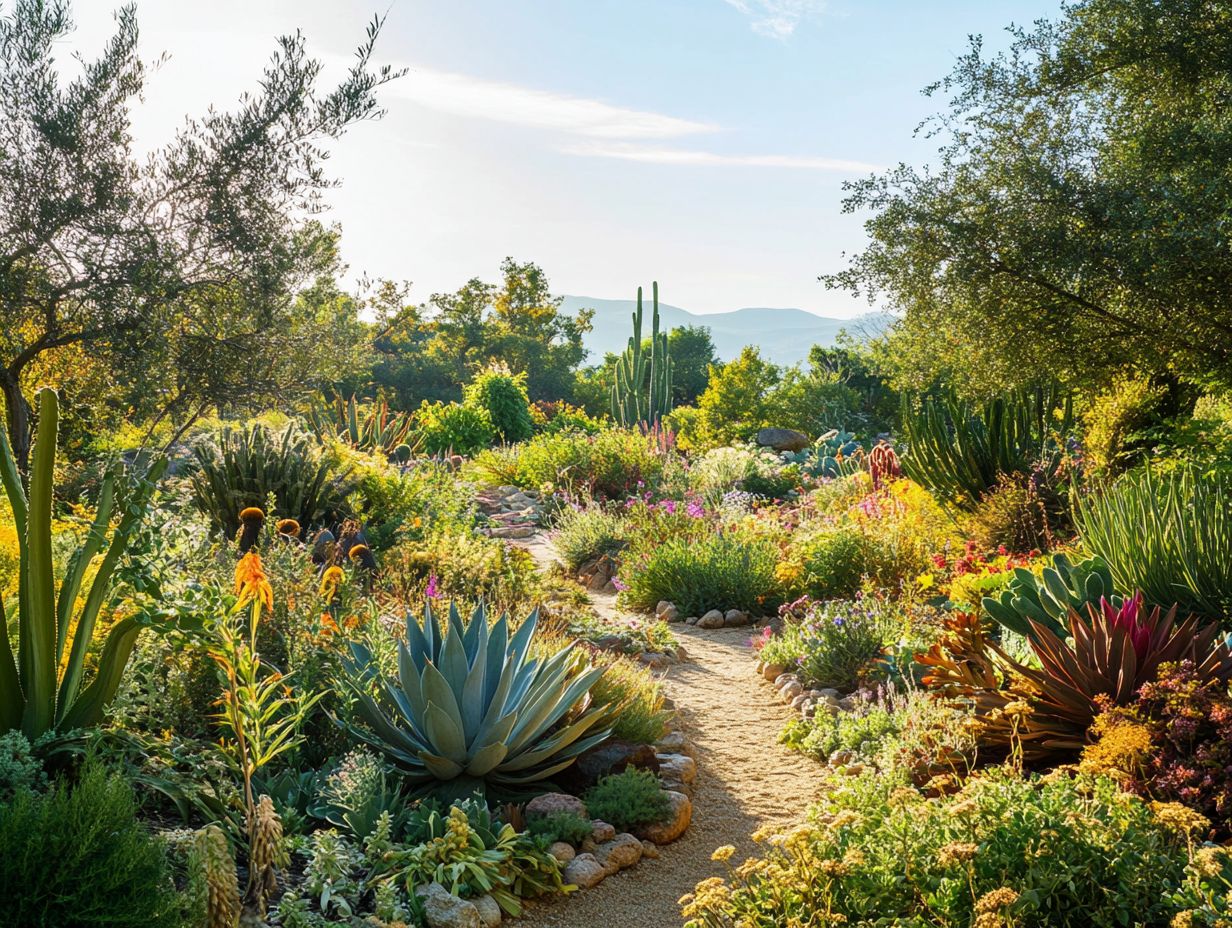
Incorporating specific plants like Lavender and coneflower can greatly enhance pollination in your garden beds. These plants attract beneficial insects that are essential for plant reproduction, including various pollinators.
By adopting a diverse planting strategy with an emphasis on contrasting colors, you can cultivate a vibrant ecosystem where bees, butterflies, and other pollinators flourish. For example, pairing flowering herbs like thyme with colorful blooms such as Zinnia not only elevates the aesthetic appeal of your space but also provides vital nectar and pollen for these important creatures while offering culinary uses.
Plants like bee balm, Marigold, and sunflowers attract a variety of pollinators, creating a lively environment that bolsters the overall health of your garden. This symbiotic relationship, along with the use of pest-repellent plants, can lead to a more productive garden, resulting in improved yields and enhanced biodiversity.
11. Companion Plants for Vegetables in Drought Areas
In drought-prone regions, choosing the right companion plants for your vegetables can significantly enhance growth, bolster resilience, and add a delightful culinary variety to your garden. Exploring native plant options for drought-prone regions transforms it into a productive and sustainable oasis filled with aromatic foliage.
By incorporating drought-tolerant companions like Lavender, you not only attract pollinators but also enjoy aromatic culinary benefits, creating a vibrant and efficient garden ecosystem. Herbs such as oregano, basil, and thyme pair beautifully with vegetables like tomatoes and peppers, enriching their flavors while reducing water requirements.
Adding Marigold into the mix can naturally deter pests, allowing your primary crops to thrive with less stress, particularly against common pests affecting Mediterranean region plants. This thoughtful pairing conserves precious water resources and maximizes your yield, making gardening a truly rewarding and flavorful adventure.
Start incorporating these plants today to see the transformation in your garden!
12. Companion Plants for Fruits in Drought Areas
Choosing the right companion plants for fruits in drought-prone areas is vital for enhancing growth and ensuring pollination, especially when considering how to use companion planting in drought gardening.
In drought-prone areas, choose plants that complement your fruits and promote a balanced garden. For example, when you plant herbs like oregano or marigold alongside tomatoes, you attract beneficial pollinators. This can boost your yields while providing shade that helps conserve soil moisture.
Certain legumes, such as beans, work their magic by fixing nitrogen in the soil. They enrich the nutrient profile and create better conditions for your fruit-bearing plants while enhancing well-draining soil.
By cultivating these beneficial relationships, you can create a thriving garden that remains resilient, even when water resources are scarce.
13. Companion Plants for Herbs in Drought Areas
Boost your herb garden today with companion planting, especially in drought-prone areas where you can learn how to choose plants for drought resistance, as certain pairings can promote growth.
Take basil and oregano, for example. These two herbs thrive harmoniously side by side, with basil s natural pest repellent qualities offering protection to oregano.
They re not just great companions in the garden; they also elevate Mediterranean dishes, creating a fragrant, flavorful foundation for sauces and marinades.
Thyme and rosemary are perfect partners. They thrive together, even in dry weather. Adding these herbs to your meals not only brings a delightful array of tastes but also fosters a symbiotic growth environment.
14. Companion Plants for Flowers in Drought Areas
Companion planting with flowers in drought-prone areas can transform your garden into a breathtaking summer spectacle, especially when you consider using top cover crops for drought-prone areas.
By incorporating drought-resistant varieties like lavender, sedum, and coneflower, you can achieve both visual allure and strength. This ensures contrast colors within your floral display.
Lavender not only dazzles with its fragrant blooms but also attracts pollinators, enhancing your garden’s ecosystem. Sedum contributes a unique texture with its succulent-like leaves, adding depth to your floral arrangement.
Meanwhile, coneflowers, with their vibrant purple petals, create a stunning contrast and flourish even in dry conditions, enhancing your garden’s visual appeal.
Consider arranging these plants in clusters or drifts to maximize their aesthetic impact. This special combination guarantees a vibrant summer display. It also promotes biodiversity, making your garden a haven for pollinators.
15. Tips for Successful Companion Planting in Drought Areas
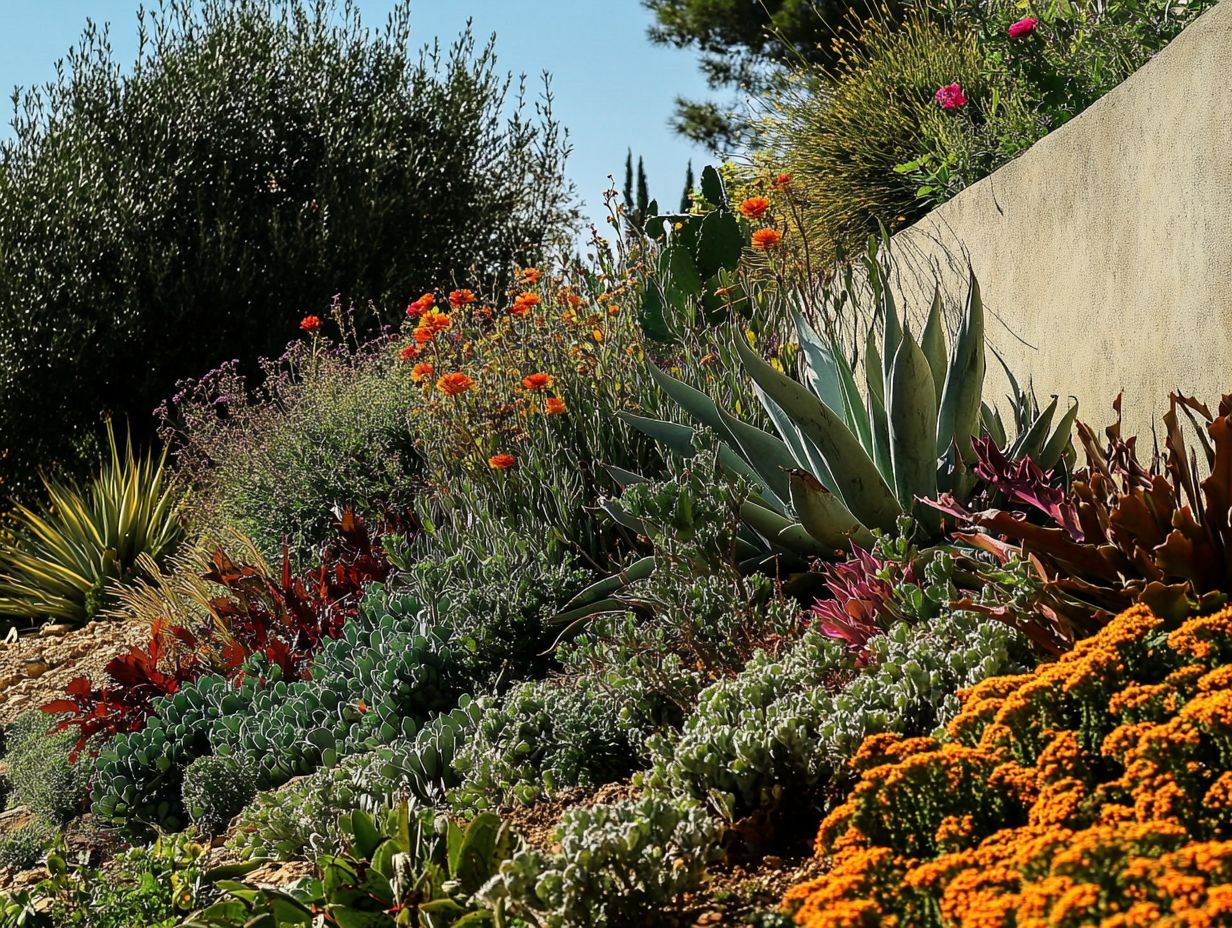
Let’s explore tips that will ensure your garden thrives even in the toughest drought conditions! Successful companion planting in drought-prone areas demands a careful and strategic approach to plant selection, especially when considering full sun exposure. To enhance your garden’s resilience, check out the best native plants for drought conditions, and consider factors like drought tolerance and well-draining soil.
Take the time to check the needs of your chosen companion plants. Look at their water requirements, sunlight preferences, and nutrient levels to ensure that the selected plants can thrive. By creating an optimal environment like putting a layer of material on the soil to help keep moisture in and enriching your soil through composting you can significantly boost your garden’s resilience while enhancing its structure and texture.
It s also essential to keep an eye on how your plants interact with each other. You want to ensure that companions not only coexist but thrive together, efficiently sharing resources and flourishing in their seasonal appeal. You should regularly observe how different plants respond to stress. This will help you fine-tune this delicate balance, ultimately improving yields and making the most of your limited water resources, ensuring a productive and efficient garden.
Frequently Asked Questions
What are the best companion plants for drought areas?
Some of the best companion plants for drought areas include succulents, Lavender, Russian sage, yarrow, and native plants such as Black-eyed Susan.
Why are these plants considered good companions for drought areas?
These plants are able to tolerate dry conditions and require minimal watering, making them perfect for areas with low rainfall or limited water resources. They also have many medicinal uses.
Do these plants have any other benefits?
Yes, these plants also attract pollinators and beneficial insects, help control weeds, and add color and texture to your garden. They can also be used in cooking.
Can I mix these plants with other types of plants in my garden?
Yes, you can mix these plants with other drought-tolerant varieties, as well as those with similar watering needs, ensuring a balanced companion planting approach. For more insights, check out what are the best ground covers for drought areas.
Are there any specific planting considerations for these companion plants?
Yes, it is important to plant these companion plants in well-drained soil and in areas with good air circulation to prevent fungal diseases. They are more susceptible to these issues in wet conditions.
Do these plants require any special care?
While these plants are low-maintenance, you should monitor their water needs and provide supplemental watering during prolonged periods of drought to ensure optimal health and productivity.

